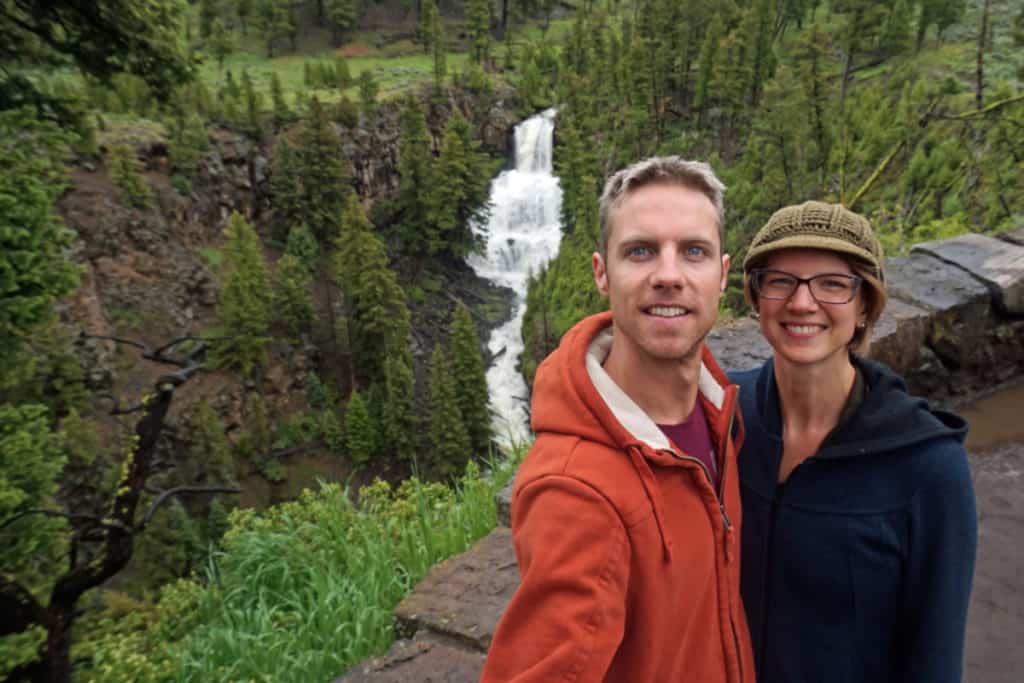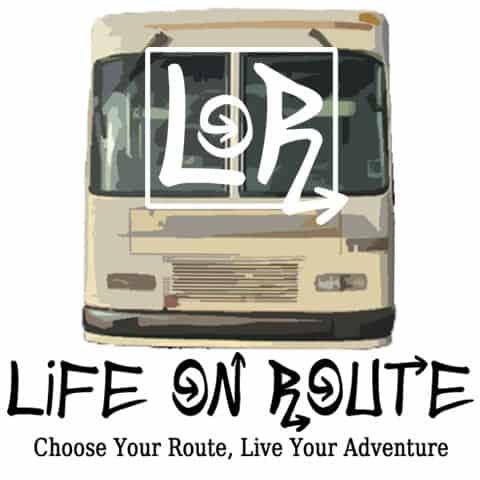This post contains affiliate links.
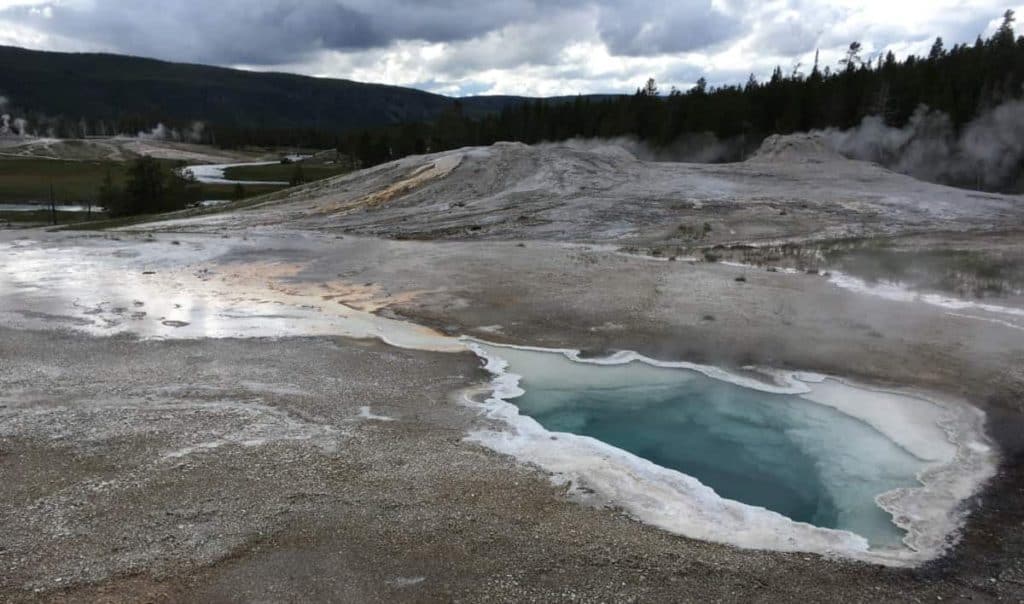
Yellowstone National Park is American’s first national park and is an amazing place to see some unique hydrothermal features found in few other places in the world. We had the pleasure of visiting Yellowstone in our 25 foot RV during our June crossing of America.
It was a fabulous trip but we learned a few things to do differently on our next visit.
- Visit in September
- Reserve Your Campsite
- Plan Your Approach
- Prepare for Rustic Camping
- Early Birds Gets the Money Shot
- Patience is a Virtue
- Leave Fido and Fluffy at Home
- Prepare for Any Weather
- Check Old Faithful’s Schedule
- Extra Wheels are an Asset
- Prepare to Unplug
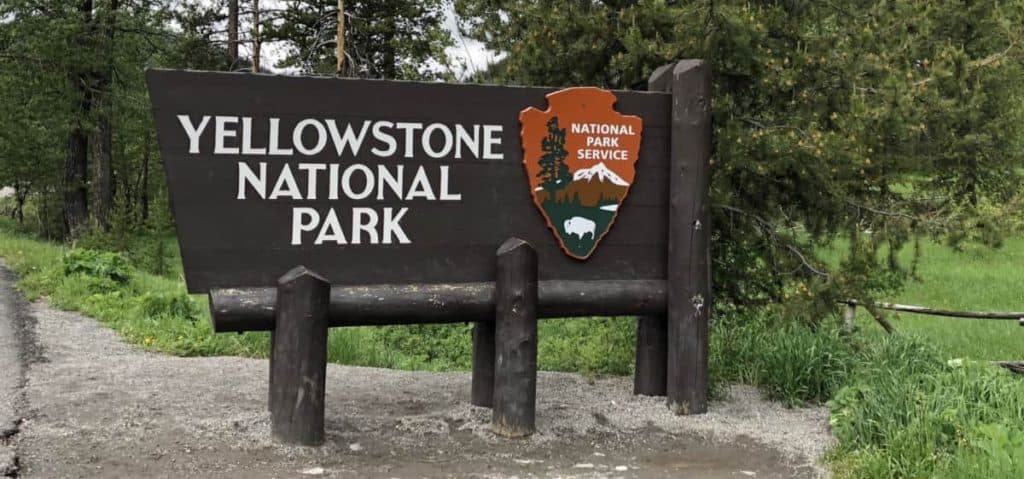
Table of Contents
1 Visit in September
As you can imagine Yellowstone National Park is one of the busiest national parks in the USA. They get an estimated 4 million visitors a year! That’s a lot of people.
More than 50% of these people visit between mid-June and August which makes sense since kids are out of school and the weather is great. But crowds suck. Yellowstone recommends visiting during nonpeak months like April, May, September or October.
September sees about 16% of the average annual visits to the park making it much less busy compared to June, July and August’s 20-24%. Obviously, that’s still a fair number of people but September has the advantage of good weather and no snow yet (hopefully, snow has fallen on July 4th before).
Spring sees fewer visitors but frequently the snow hasn’t receded yet and temperatures are still cold. June and Septemeber have similar temperatures and even in the height of summer, it can cool down at night to the low 40’s (5 or 6 C).
We were there in mid-June and, while there was no snow, it was pretty chilly, dipping down to close 40 F (5 C) at night. It was warmer during the day but we were still forced to rock a toque (i.e. beanie).
Before heading to Yellowstone make sure your RV’s furnace and batteries are in good shape. Don’t be like us and not be able to use your RVs furnace because your batteries are old and don’t hold a charge anymore.
Even in chilly, middle of June weather, it was super busy! So much so that we couldn’t find parking at Grand Prismatic Spring, one of the iconic spots, and got fed up and left without seeing. People were parked all the way up the road leading to the geyser.
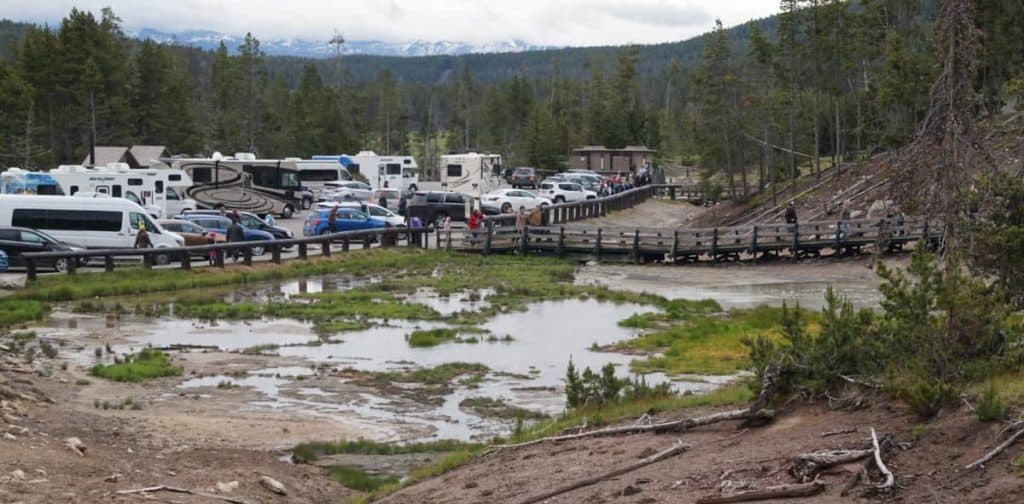
2 Reserve Your Campsite
Yellowstone boasts 12 campgrounds throughout the park but only 5 of these are reservable. Some don’t open till mid-June and close mid-September. Rates range from $15 to $47.
Of the over 2000 sites available in the park 80% of them are reservable which means you will be competing with a lot of other people for those 400ish sites that are first-come-first-served.
If you want to take a lot of headache and stress out of your visit then book ahead. You might want to book far in advance though especially if you want one of the coveted full serve sites at Fishing Bridge RV Park. Bookings can be made up to 11 months in advance.
Many of the first-come-first-served sites have size restrictions further reducing the available sites. We did not have a reservation for our June stay but were able to secure a campsite at Lewis Lake which has a maximum length of 25′. WE JUST FIT and that was with us being very selective of our site.
If you decide to wing it head into one of the visitor’s centers and they can tell you the status of site availability in the park. It won’t be real time for the non-reservable campgrounds but it may give you an idea of where you should try to go first.
Also, it’s a good idea to nab a spot as early in the day as possible, then set out adventuring. Campgrounds can fill up very early in the day.
The Yellowstone NPS site lists the fees and opening dates for all the campgrounds as well as their amenities.

3 Plan Your Approach
Getting to Yellowstone can involve some serious mountain passes so planning your route to get there is a must. Two routes you might want to avoid are the Bighorn Mountains east of Cody, WY and the Beartooth Highway between the Yellowstone’s Northeast Entrance and Red Lodge, MT.
It may be difficult to avoid the mountain roads depending on where you are coming from. If you are coming from the east, like we were, avoiding the Bighorn Mountains AND Beartooth Highway will force you north out of your way a bit.
We naively took the Bighorn Mountain route along highway 16 after seeing it advertised along the highway as “least grade” and “scenic route”. While it was a gorgeous drive once we emerged from the clouds it definitely wasn’t low grade. That being said I don’t know how it would have compared to highway 14 through the northern part of Bighorn National Forest.
Highway 16 through Bighorn was doable in our small, slightly under-powered RV. We made use of our four ways, took it slow, used the pull-offs and made a stop to cool the brakes before a steep, switchback, downhill ride out of the mountains.
Beartooth Highway has an even crazier set of switchbacks but other RV’s have managed this too. It’s supposedly one of the most scenic drives in the US.
If you plan your approach to Yellowstone then you can take any surprise mountain climbs out the equation. Just give your rig plenty of time to clamber up those hills and take breaks on both the way up and down to prevent overheating.
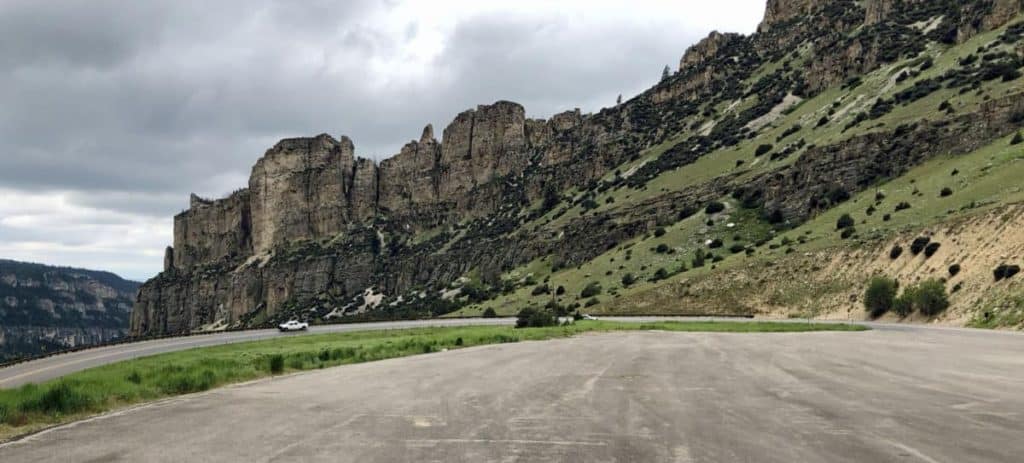
4 Prepare for Rustic Camping
As I mentioned above, only one of Yellowstone’s in park campgrounds has hookups, Fishing Bridge RV Park. This means you are mostly on your own for power and water.
If you are staying at one of the reservable campgrounds then you aren’t totally out of luck for amenities. They all have luxuries like flush toilets, dumpsites, showers (some cost extra), generator use allowed and a few even have laundry facilities. Even if you aren’t staying at one of these sites you are still able to dump your tanks and fill your water.
Of the 7 first-come-first-served campgrounds only two (Mammoth and Norris) have flush toilets and these two are also the only ones that allow generator use.
The campgrounds that permit generators have designated usage hours between 8 am and 8 pm. It also needs to be quieter than 60dB.
5 Early Bird Gets the Money Shot
Since this park can be absurdly busy, the early you get out exploring the fewer people will be around. Visiting the busiest spots, like Grand Prismatic Spring, lets you easily snag a parking spot and with fewer people around you can snag the money shot without waiting for a bazillion people to get out of the way.
So set an alarm, make your coffee and breakfast to go and get out there bright and early. If you are feeling very perky then you can catch some epic sunrise shots in the park. Also, with fewer people around you might be able to catch some wildlife that would be otherwise scared off by the multitudes of people.
Explore the busiest spots before 9 am and after 3 pm to avoid the bulk of the crowds.
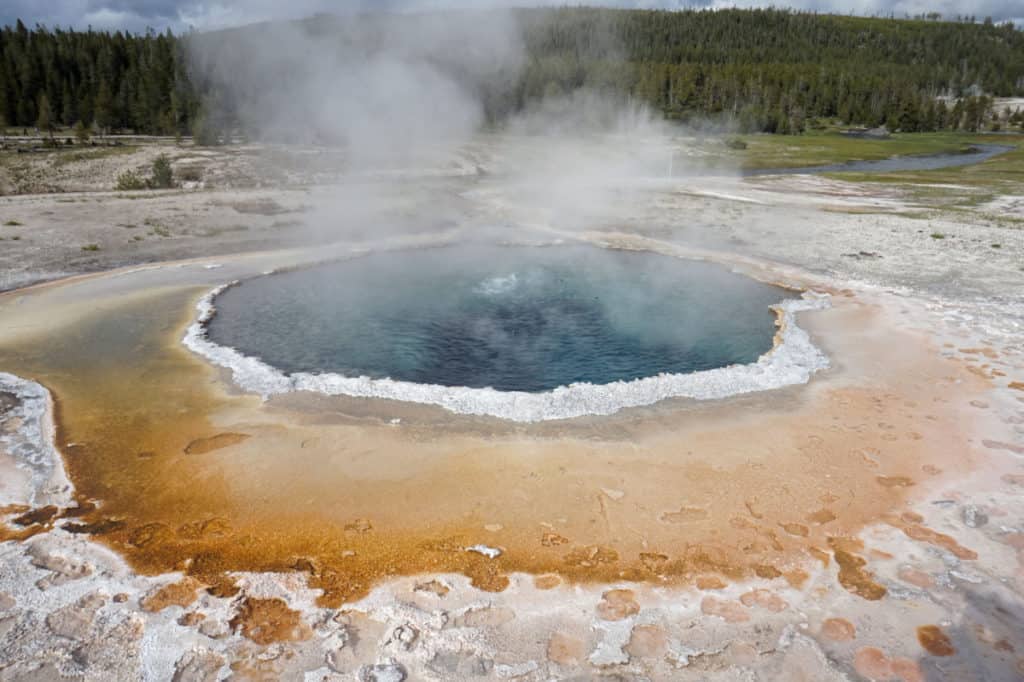
6 Patience is a Virtue
In Yellowstone National Park it’s more than just crowds of people who may try your patience, there are also crowds of animals. The park is home to many buffalo herds who could care less if they are stopping traffic while the herd crosses the road.
Traffic jams are common throughout the park during the peak season. They can be caused by the usual human stupidity, unfortunate accidents or construction. Animals blocking the road or numerous cars pulled over on the narrow two-lane road to possibly catch sight of a bear in the distance are common occurrences you’ll need to take in stride.
Just remember you are here to enjoy nature, so take your time, don’t be in a hurry and leave your road rage at home. In the standoff between buffalo and car, the buffalo always wins.
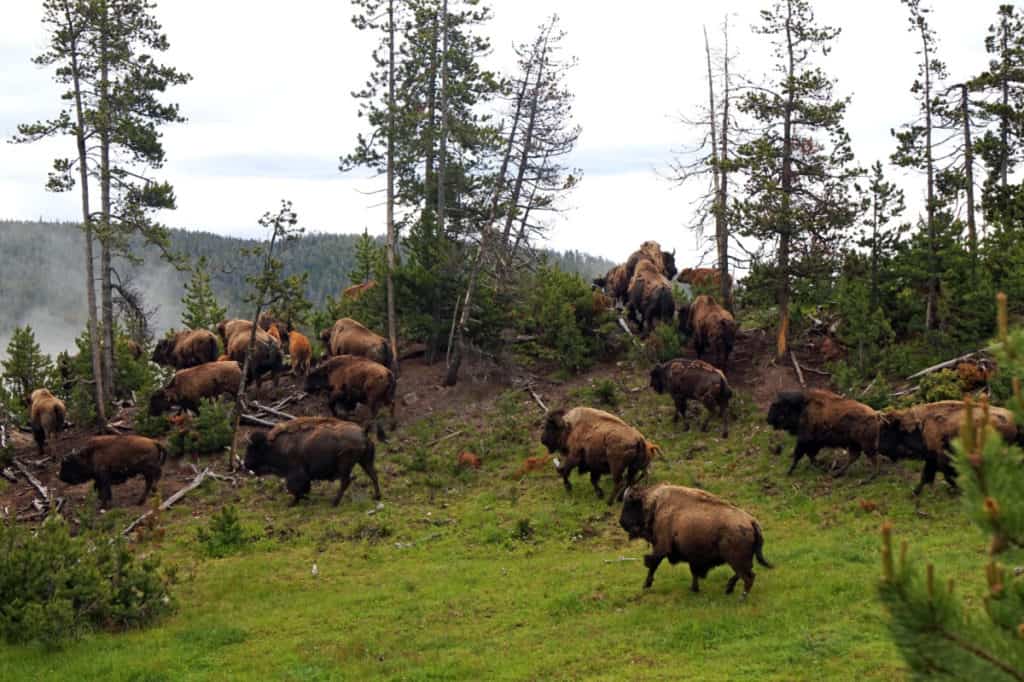
7 Leave Fido and Fluffy at Home
Us pet owners love to travel with our beloved furry friend but unfortunately, Yellowstone isn’t the best place to bring your traveling furball.
There are many regulations about pets in Yellowstone and they are there to protect your pet. Many dangers exist in the park such as predators, hot springs and even catching diseases from park wildlife. Your pet can also endanger wildlife by passing along diseases not native to the area.
In general, pets need to stay in developed areas and within 100 feet of roads, campgrounds and parking lots. They must be leashed at all times or contained in a crate or vehicle. They are not allowed on hiking trails, boardwalks, in the backcountry or thermal areas.
If you choose to you can leave your pet in your vehicle for short periods of time but of course, you need to be mindful of the weather and make sure their basic needs are met. And as always clean up after your pet and dispose of the waste appropriately.
While we were in Yellowstone we had out cat Monty with us and left him safely in the RV while we were exploring any of the thermal areas (it was mid-June and too hot was the least of our worries). At our campsite, we harnessed up the cat for his safety and attempted to let him walk us but mostly just kept him inside, much to his displeasure.
If you can’t leave Fido or Fluffy at home while you explore Yellowstone but don’t want to keep them cooped up in the RV, there are kennels in the towns surrounding Yellowstone.
8 Prepare for Any Weather
If you thought the weatherman was a liar before wait till you visit Yellowstone. Since most of the park sits at an elevation of at least 6,000 ft above sea level the weather is anything but predictable.
Be prepared for hot temperatures, cold temperatures, rain or snow in any month of the year. Layers will be your best friend to keep you comfortable along with a rain jacket and windbreaker.
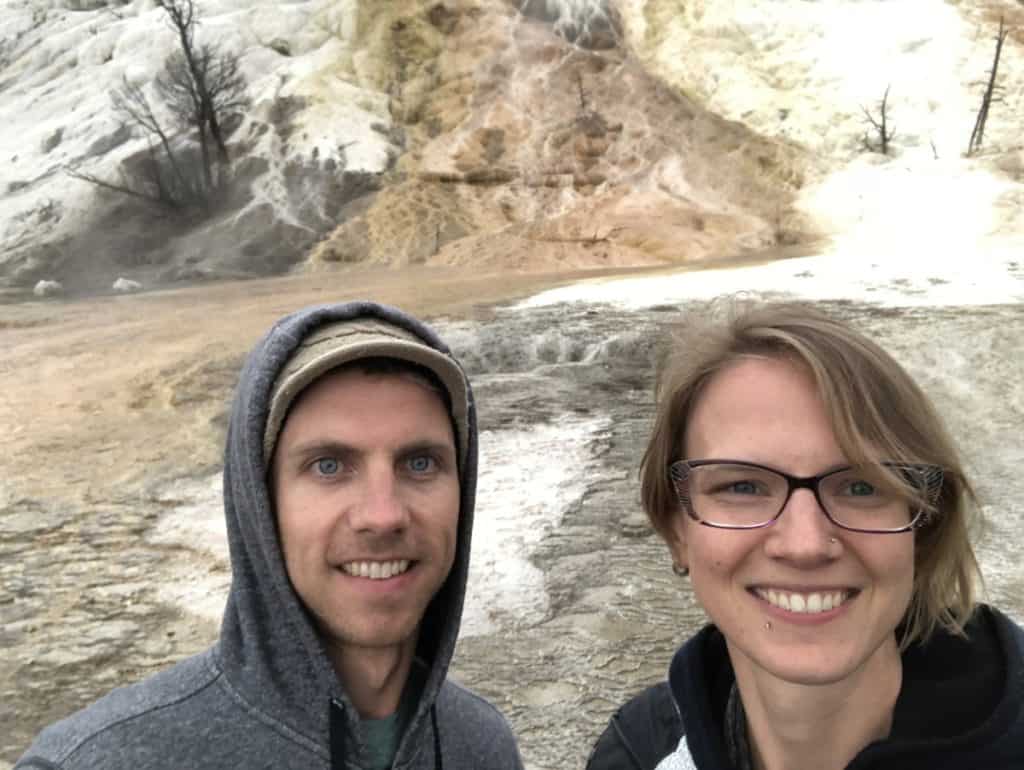
Summer is the mildest of course with highs up to 80F (26C) but more commonly around 70F (21C). It dramatically cools off at night and can even reach freezing levels in the higher elevations. These big temperature swings tend to lead to summer thunderstorms.
Fall and spring are obviously cooler with temperatures ranging from 30F to 60F (-1C to 16C) during the day and getting even colder at night. Snow is a real possibility especially during early spring and late fall.
Winter makes for some interesting scenes in Yellowstone but you’ll need to wear your woolies and prepare for snow. Temperatures range from 0F to 20F (-17C to -6C) during the day and commonly fall below zero at night, yes 0F. Snow is a given at this time of year with the park averaging 150 inches a year.
To get a full look at what the temperatures are like see the chart below for average maximum and minimum temperatures in each month.
Monthly Average Temperatures (Source)
| Month | Ave. Max Temp (F/C) | Ave. Min Temp (F/C) |
| January | 29/-2 | 10/-12 |
| February | 34/1 | 13/-11 |
| March | 40/4 | 17/-8 |
| April | 49/10 | 26/-3 |
| May | 60/16 | 34/1 |
| June | 70/21 | 41/5 |
| July | 80/26 | 47/8 |
| August | 78/26 | 45/7 |
| September | 68/20 | 37/3 |
| October | 56/13 | 29/-1 |
| November | 39/4 | 19/-7 |
| December | 31/-1 | 12/-11 |
9 Check Old Faithful’s Schedule
Old Faithful is Yellowstone’s most famous geyser due to it being fairly frequent and predictable. If you didn’t know, a geyser is a hot spring where pressure builds up from the water boiling and sends a column of water and steam into the air.
But just because Old Faithful erupts frequently doesn’t mean you’ll magically arrive 5 minutes before the next eruption. The geyser erupts about 17 times per day at intervals of 60-110 minutes.
If you just missed the last eruption you don’t want to waste time sitting and staring at an inactive thermal feature for the next hour or two. Head into the visitors center and you can see predicted times of eruptions for most geysers in the Old Faithful area.
Predictions are fairly accurate, about 90%, and as long as you arrive at the viewing area about 10 minutes before the next predicted time you should easily see Old Faithful spew thousands of gallons of water into the air. Eruptions last anywhere from 1.5 minutes to 5 minutes and reach over a hundred feet in the air.
While you are waiting for Old Faithful to blow her top there are plenty of walks in the area for you to enjoy. These walks will take you around other thermal features and geysers. Hopefully, you will get to catch one of the other, less frequent, geysers erupting while exploring the Old Faithful area and Upper Geyser Basin.
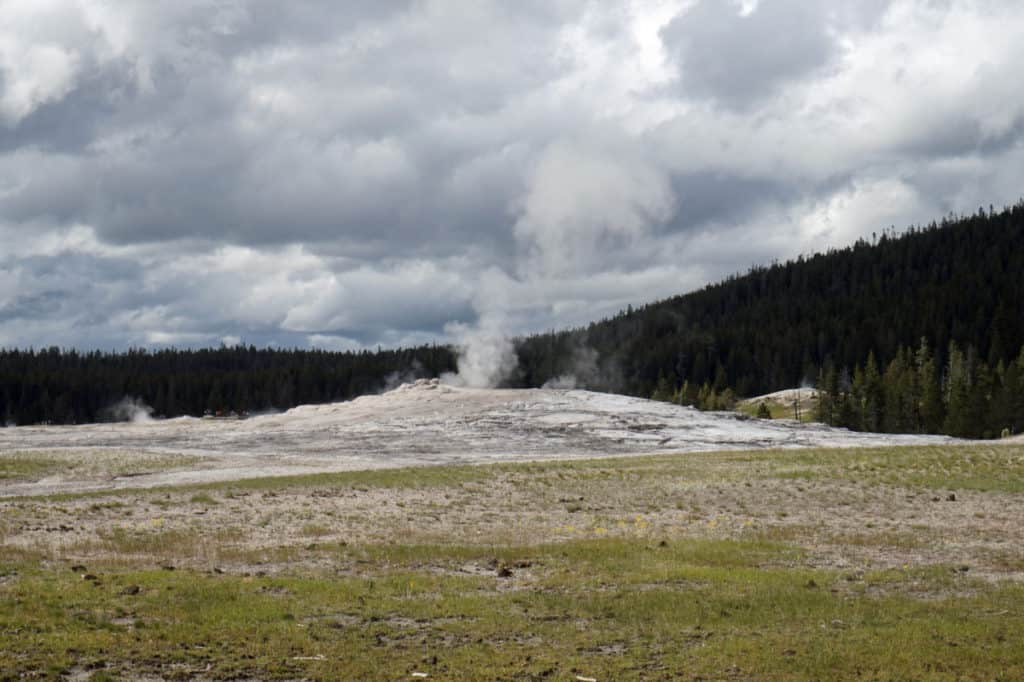
10 Extra Wheels are an Asset
A tow car might just be your best friend when visiting Yellowstone. It’ll give you the freedom to park just about anywhere and in a crowded place that is a high-quality asset.
We didn’t have a tow car and did all our exploring in our 25 foot RV plus bike rack. As I mentioned before we skipped the iconic Grand Prismatic Spring since we couldn’t find parking anywhere for our not too large RV.
At one of our favorite spots, Artists Paintpots, we barely squeezed ourselves into a spot and getting out of there was a 20 point turn inching back and forth due to cars parked closely beside us and along the outer edge of the parking lot. A small tow car would have made life a bit simpler.
Next time we visit Yellowstone, trust me there will be a next time, I’d like to have a tow car with us or else rent a car from Jackson or West Yellowstone. I think the cost and hassle of renting a car would greatly outweigh the pain of maneuvering a large RV around thousands of tourists and having to break camp and pack up every morning.
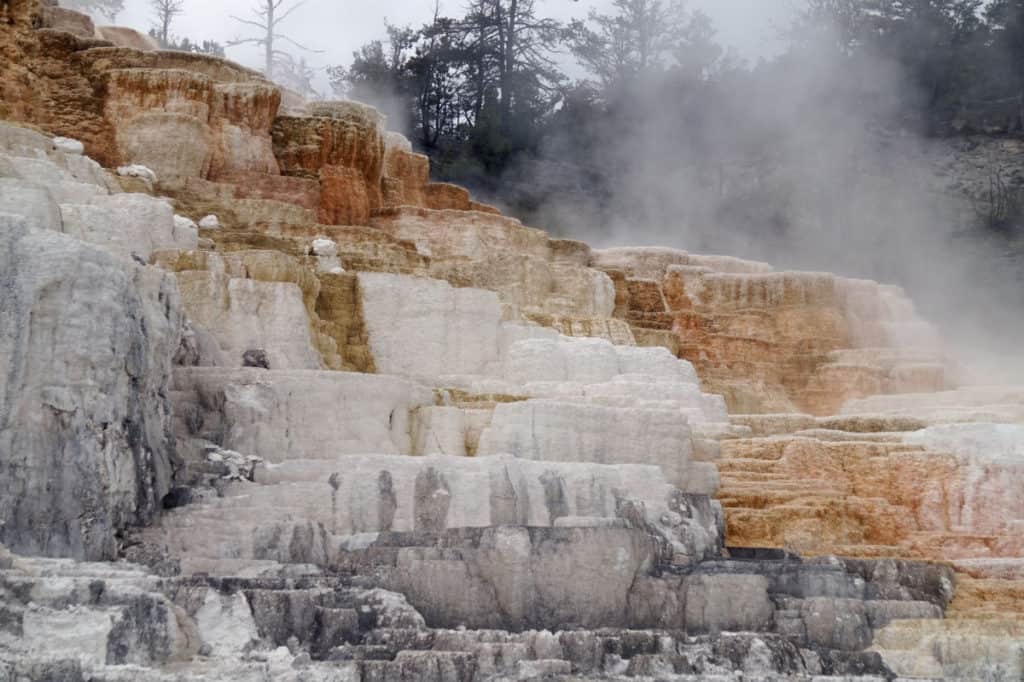
11 Prepare to Unplug
Whether you are ready to or not, Yellowstone will force you to unplug from your devices. Cell reception is terrible in the park. Many areas don’t have any what-so-ever and the parts that do get swamped during peak season.
The major areas have their own cell towers which provide service to the most developed spots as well as the North and West entrances. Towers are located at Mammoth Hot Springs, Old Faithful, Grant Village, Lake Village, West Yellowstone, and Mount Washburn.
Even with these towers, the wireless waves get clogged up during the summer. We struggled to look up basic thing on AT&T. Apparently, Verizon has the strongest signal so you may have better luck if you are with them. Texting is likely the most reliable means of communication.
Free WiFi is available at the visitor’s center in Mammoth Hot Springs but it’s slower than molasses in winter, not overly surprising since everyone has the same idea to “quickly” check their email/Facebook/Twitter while at the visitor’s center.
A couple of places do offer internet for purchase which may be faster than the free option. Mammoth Hotel Lounge, Old Faithful Snow Lodge, Lake Lodge Cafeteria, and Grant Village Lodge buildings all offer WiFi for purchase but they warn that connectivity is limited and may not always be available.
Just unplug and enjoy the peace that nature has to offer.
